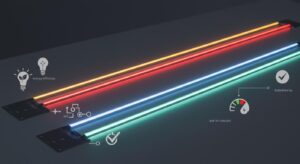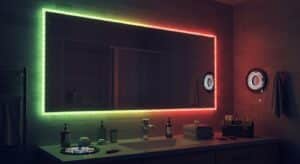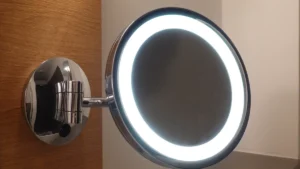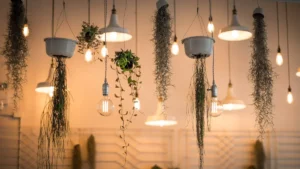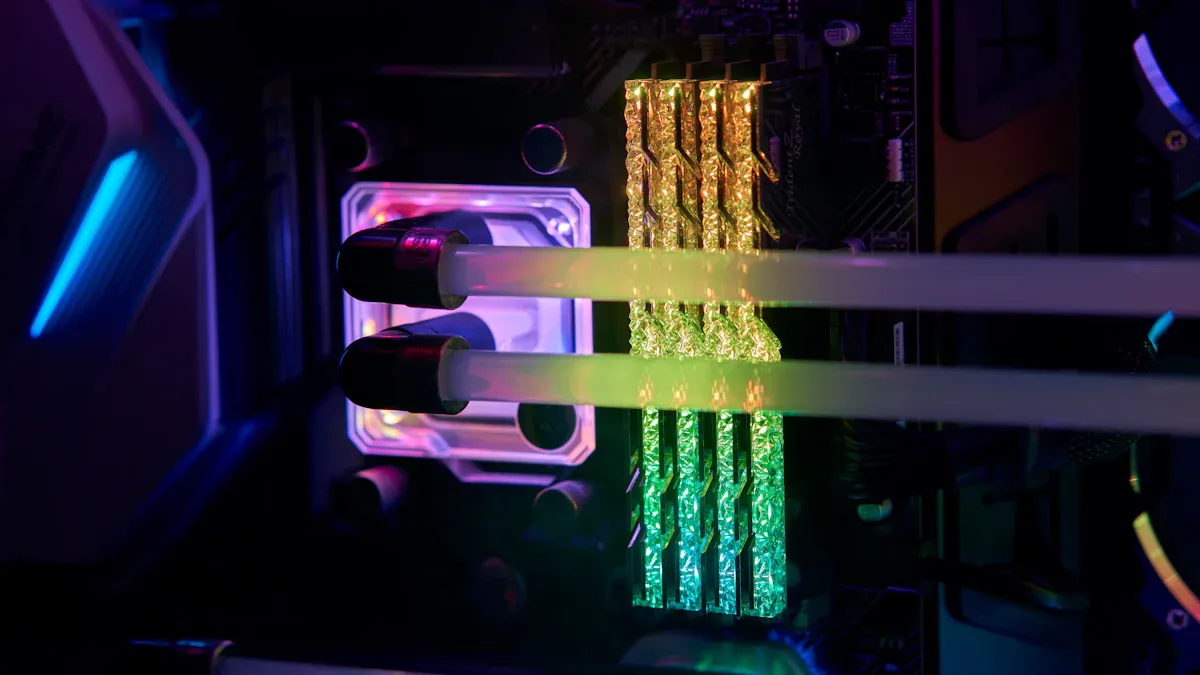
Properly installing LED modules helps them work well and last long. These modules are very useful for signs and lighting projects. They use less energy, stay cool, and can last 50,000 hours. This lowers repair needs and saves money on power. You can use them indoors or outdoors because they can be customized. Follow simple steps to install them correctly. This improves light quality, saves energy, and avoids mistakes.
Key Takeaways
Always check the power and energy needs first. This makes sure your power source works safely without overheating.
Gather all tools and items you need before starting. Use screwdrivers, wire cutters, and safety gear to make work easier.
Plan where to place your LED modules carefully. Keep them spaced evenly for good brightness and no shadows.
Secure all wires and connections tightly. For outdoor projects, use waterproof connectors to keep water out and make them last longer.
Check and clean your LED modules often. This keeps them bright, working well, and lasting longer.
Preparation for LED Module Installation
Checking Power Needs
Knowing voltage and wattage
Before setting up LED modules, figure out the voltage and wattage needed. Most LED modules use 12VDC or 24VDC, so check their details. Multiply one module’s wattage by the number of modules to get the total. This helps ensure your power supply can handle it without overheating or breaking.
Tip: Add 20% extra when calculating power needs. This avoids overloading and helps your LED modules last longer.
Picking the right power supply
Choose a power supply that matches your LED modules‘ voltage and wattage. For example, if you need 80W, pick a power supply of at least 100W. Using more than one driver can help spread power in bigger projects. This keeps performance steady and lowers electrical risks.
Collecting Tools and Supplies
Important tools like screwdrivers and wire cutters
Having the right tools makes the job easier and safer. Gather these:
Screwdriver: To tighten parts.
Wire stripper: To prepare wires for connections.
Electrical tape: To cover wire connections.
Voltage tester: To check if wires are safe.
Safety glasses: To protect your eyes.
Ladder: To reach high places.
Needed items like LED modules and wiring
Get all the parts ready before starting:
LED modules: Pick ones that fit your project design.
Power supply: Match it with your voltage and wattage needs.
Mounting brackets or screws: To hold the modules in place.
Connectors and wires: To link the modules to the power supply.
Staying Safe
Turning off power first
Always switch off the power before working on wires. This stops shocks and keeps you safe. Use a voltage tester to make sure no electricity is flowing.
Wearing safety gear and avoiding risks
Wear gloves and safety glasses to stay protected. Don’t work in wet areas, as water increases shock risks. For outdoor projects, use weatherproof materials to protect your LED modules and wires.
Note: Testing ahead of time, like using filter modules, reduces problems like EMI. This shows why planning is key for a smooth installation.
How to Install LED Module Lights
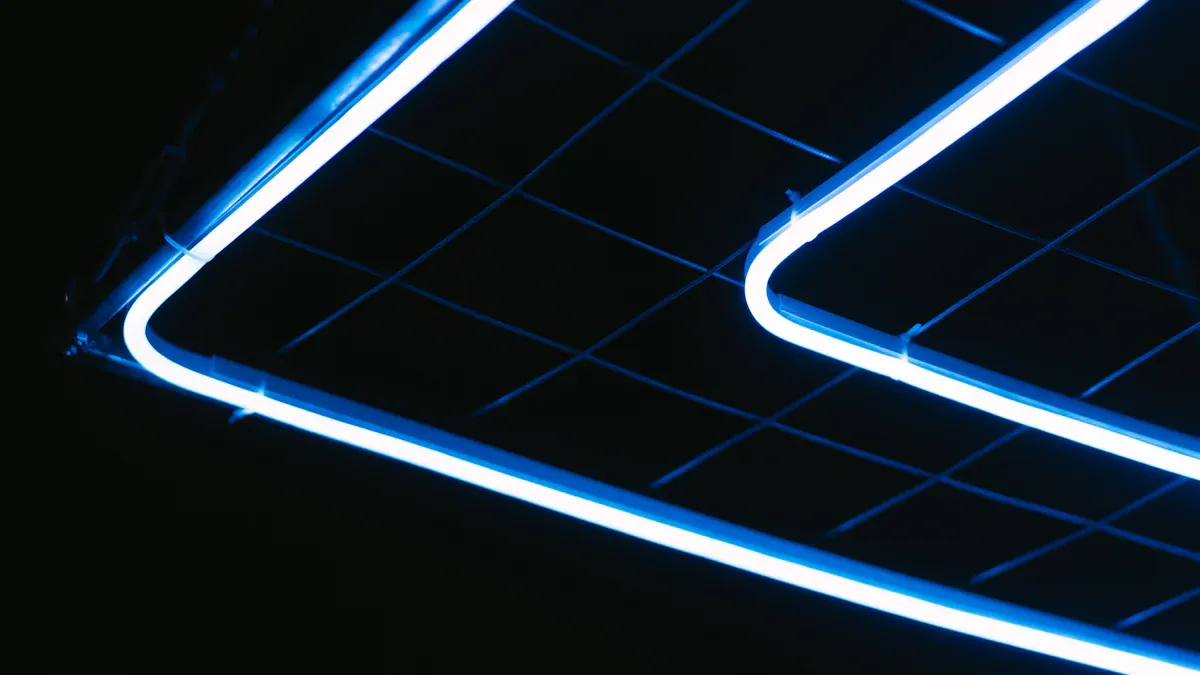
Connecting LED Modules
Wiring the modules to the power supply
To link LED modules to the power supply, find the positive and negative ends on both. Connect the positive wire of the LED module to the positive terminal of the power supply. Attach the negative wire to the negative terminal. Use wire connectors or tape to hold the wires together. For stronger connections, solder the wires and cover them with heat shrink tubing. This keeps the connection steady and long-lasting.
Tip: For bigger projects, connect multiple LED strips in parallel. This avoids voltage drops and keeps brightness even. Don’t connect them in series, as it can cause uneven lighting.
Ensuring proper polarity and secure connections
Polarity is very important when setting up LED modules. Reversing the wires can harm the modules. Always check the polarity before turning on the system. Use wire nuts or waterproof connectors to secure the wires, especially for outdoor setups. This stops water from damaging the wires and keeps the installation safe.
Positioning LED Modules for Signs
Planning the layout for even lighting distribution
Plan the layout before placing the LED modules. Even placement gives balanced brightness across the sign. Use tools like a measuring tape or laser level to space them correctly. Adjust the spacing to avoid shadows or uneven light. Test the lights by turning them on before finalizing the layout.
Plan Layout: Arrange the modules inside each letter or section of the sign. Use white LED modules for colored vinyl signs to make them brighter.
Using adhesive or mounting hardware to secure modules
Many LED modules have sticky backs for easy setup. Peel off the cover and press the module onto the surface. For extra strength, use screws or clips, especially outdoors or in areas with vibrations. This keeps the modules firmly in place.
Securing Wiring and Connections
Organizing and fastening wires to prevent tangling
Keep wires neat for a clean look. Use zip ties or clips to bundle them together. Run the wires along the edges of the sign to hide them. This makes the setup look better and stops wires from tangling or breaking during repairs.
Protecting connections from moisture and damage
For outdoor signs, use waterproof connectors and covers to shield the wires. Follow the manufacturer’s instructions to meet safety rules. This step makes your setup last longer and prevents water from causing electrical problems.
Note: Check local electrical codes to ensure your setup is safe. Securing wires and connections properly helps your lighting system work well for a long time.
Testing and Troubleshooting LED Modules
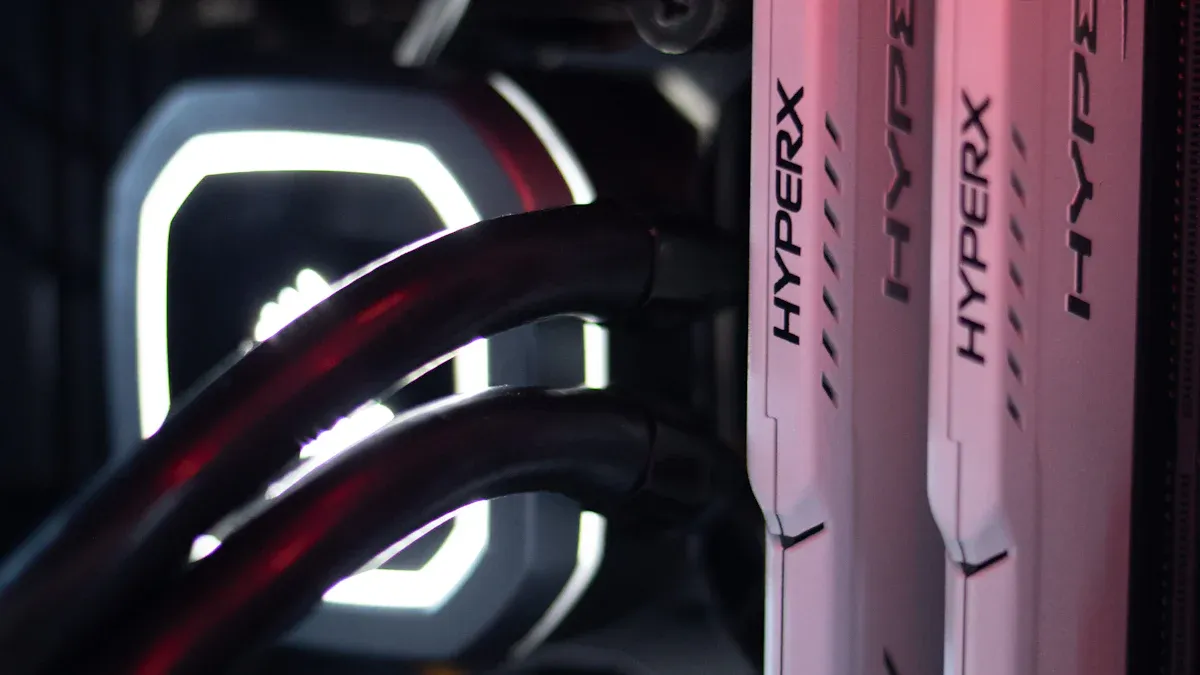
Testing the Installation
Turning on the system to check if it works
After setting up, switch on the power supply. Look at each LED module to see if it lights up correctly. All modules should shine with the same brightness. If one doesn’t light up, there might be a problem to fix.
You can test your LED system using different methods. Below is a table showing common ways:
Testing Method | What It Does |
|---|---|
Visual Inspection | Checks for problems like bad soldering or broken parts. |
Automated Optical Inspection (AOI) | Machines check solder joints and parts placement to find mistakes. |
Functional Testing | Tests if modules work well by checking current, voltage, and brightness. |
These tests help find problems in the LED modules. Fixing these ensures they work their best.
Finding and fixing dim or broken modules
If a module is dim or doesn’t work, check its connection to the power supply. Loose wires or wrong polarity can cause issues. Use a voltage tester to see if power reaches the module. Replace broken wires or connectors to fix it.
For dim lights, make sure the power supply matches the total wattage. A weak power supply can cause uneven brightness. Upgrade to a stronger power supply if needed.
Troubleshooting Common Problems
Fixing loose wires or wrong connections
Loose wires are a common issue with LED modules. Check all wires and connectors to ensure they are tight. Replace broken connectors or tighten screws. Always check wire polarity before turning on the system. Wrong wiring can harm the modules or make them stop working.
Replacing broken modules or power supplies
If a module still doesn’t work after fixing wires, it might be broken. Replace it with a new module that fits your system. If the power supply isn’t giving steady voltage, replace it with a better one. Regular checks and quick fixes keep your LED system working well.
Tip: Keep extra modules and connectors ready for quick fixes. This saves time and keeps your lights running smoothly.
Tips for Successful LED Module Installation
Planning the Layout
Measuring and marking positions for precise installation
Measure carefully to make your signs look neat and bright. Use a tape measure to find where each module should go. Mark these spots with a pencil or tape to guide you. This step stops uneven lighting and saves time fixing mistakes later. For big signs, split the surface into parts and plan each section.
Considering spacing for optimal brightness and coverage
Spacing is key to getting even light. Place modules close enough to avoid dark areas but not too close to overlap. For detailed designs, adjust spacing to highlight certain spots. Test the setup by turning on the modules before securing them. This ensures the light looks just right.
Tip: Check the table below for expert advice on power, voltage, and size to improve your layout:
Factor
Recommendation
功率
Pick wattage and lumens based on space size and brightness.
Voltage
Match LED voltage with the power source; use a driver if needed.
Number of LEDs
More LEDs give brighter light and wider angles; balance cost and benefit.
Dimensions
Make sure module size fits and allows airflow for cooling.
IP rating
Choose based on location; outdoor signs need at least IP65.
Heat management
Use heat sinks or fans for high-wattage modules to control heat.
Maintaining LED Modules
Regularly inspecting for wear and tear
Check your modules often to catch problems early. Look for loose wires, broken connectors, or dim lights. The L70 rule shows when an LED’s brightness drops to 70%. Not all modules fail at once, so early checks keep your signs working and looking good.
Cleaning modules to maintain brightness and efficiency
Dust can make your modules less bright. Clean them with a soft cloth or mild cleaner. Don’t use rough materials that might scratch them. For outdoor signs, check for dirt or water damage and fix these issues quickly to keep them working well.
Enhancing Durability
Using weatherproof materials for outdoor projects
Outdoor signs face tough weather like rain and heat. Use weatherproof materials, like IP65-rated modules, to protect them. Cover wires and connectors with waterproof seals to stop water damage. Experts say bad seals or connectors can cause failures, so use good-quality materials.
Avoiding overloading the power supply
Too much power can harm your modules. Use a power supply that matches your system’s wattage. Add surge protectors to guard against voltage spikes. In remote areas, solar-powered options can keep your setup running smoothly.
Note: Good power management and strong materials help your LED modules last longer. This keeps your signs bright and reliable for years.
Setting up LED modules needs good planning and careful work. Always turn off power and wear safety gear to stay safe. Plan the layout to spread light evenly and make it bright. Clean and check your LED system often to keep it working well. This helps it last over 50,000 hours. Make sure heat can escape to avoid damage or danger. By doing these steps, you can build strong, energy-saving lights that work great for a long time.
FAQ
What are channel letter signs, and how do LED modules help them?
Channel letter signs are raised letters used for signs. LED modules make them brighter and save energy. They light up evenly, making the signs clear and eye-catching, especially at night.
Can LED modules be used for outdoor channel letter signs?
Yes, LED modules are great for outdoor channel letter signs. Use weatherproof materials and IP65-rated modules to protect them from rain and heat. This keeps them strong and working well.
How do you design the layout for channel letter signs?
Measure the sign’s size and mark where each LED module goes. Place them evenly to stop shadows or uneven light. Test the lights before attaching the modules to get the best brightness.
What safety steps should you take when installing LED modules?
Turn off the power before starting. Wear gloves and safety glasses to stay safe. Don’t work in wet areas, and use waterproof connectors for outdoor signs.
How do you take care of LED modules in channel letter signs?
Check the modules often for damage. Clean them with a soft cloth to remove dust. Fix or replace broken wires or connectors quickly to keep the signs bright and working.
See Also
Steps To Install LED Modules For Channel Letter Signs
The Benefits Of LED Modules For Sign Lighting
Guide To Installing LED Light Bars In Signage
Key Tips For Selecting The Perfect LED Sign Module
Reasons To Choose LED Modules For Your Signage
